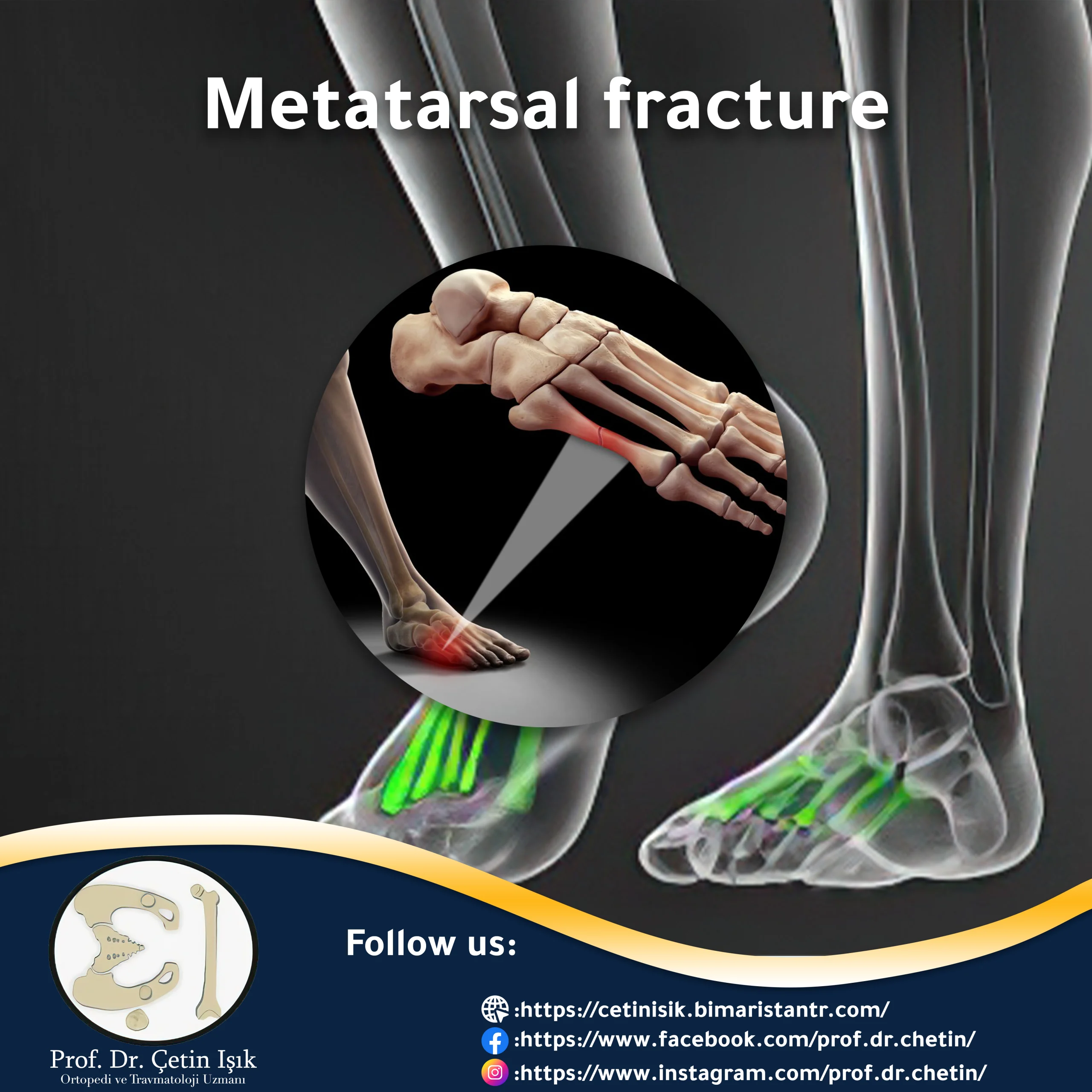Forearm fractures can affect any age group, often after a fall on the forearm or as a result of a muscular injury, and the management varies according to the type and location of the fracture.
According to studies, forearm fractures represent 40% of all fractures that occur in childhood. However, forearm fractures in children heal more quickly compared to adults due to the speed of their cell renewal.
What bones make up the forearm? How do you get fractured? In this article, you will learn about the signs of a forearm fracture, its most important types, and methods of treatment to learn how to act if you or someone you know suffers a forearm fracture.
Introduction to forearm fractures
The forearm is the part connecting the elbow and the wrist, located in the lower part of the arm. The forearm also consists of two bones, the ulna bone (the medial side) and the radius bone (the lateral side). They are considered the basis for many of the tendons of the forearm and arm muscles.
Often Fractures in the forearm or so-called forearm fractures It is associated with a fracture of both the radius and the ulna in adults. As for forearm fractures in children, the fracture includes one of the forearm bones - either the radius fracture or the ulna fracture.
Strong blows that lead to forearm fractures may be associated with ligament rupture, in addition to the fact that the elbow or wrist joint may be dislocated. Therefore, a complete and accurate examination of the entire arm must be performed when the forearm is fractured.
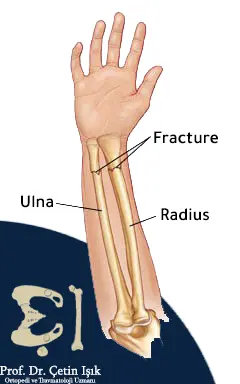
Types and locations of forearm fractures
Forearm fractures have different types, the injuries to the two bones that make up the forearm with damage to the joint include:
- Monteggia fracture: an ulna fracture with dislocation of the head of the radial bone at the elbow joint.

- Galeazzi fracture: radius fracture with dislocation of the distal ulnar-radial joint (at the wrist end).
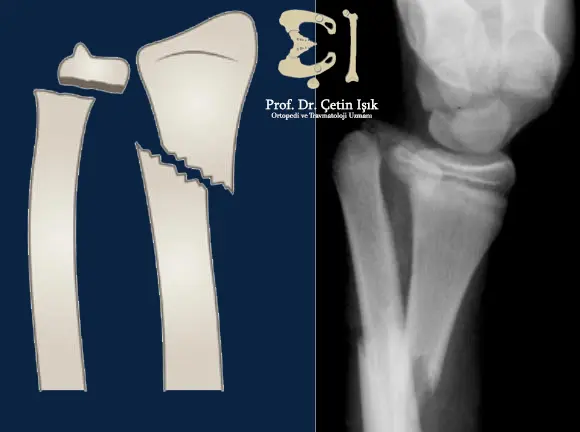
Other places on the forearm that can get a fracture:
- Fracture of the head and neck of the radius
- Isolated radial fractures
- Fractures of the lower end of the radius
- Fractures of the lower end of the ulna and radius
Causes of forearm fractures
Forearm fractures occur in different ways. The most common causes of forearm fracture include:
- Forearm fractures often occur due to direct blows to the forearm area, occurring when a person defends himself, as the forearm and hand are used to cover other more important places such as the face or neck.
- Traffic accidents abound in arm fractures and fractures of the forearm bones.
- Falls on an outstretched hand are the leading cause of forearm fractures.
- Forearm fractures occur in children due to a sudden fall on the arm and hand while playing, which is the main cause for them.
Symptoms of forearm fractures
The symptoms of right forearm fractures do not differ from those of the left. Patients with bone fractures in the forearm suffer from the following symptoms:
- Any Forearm fracture will cause sudden pain and swelling
- Bruising in the forearm area
- Deformation of the shape of the arm so that the broken forearm becomes shorter in length than the forearm or the other healthy arm
- Inability to rotate the broken arm, in addition to difficulty moving the forearm
- The patient comes carrying his injured forearm with his other healthy hand.
- Numbness and tingling, as well as a feeling of weakness in the fingers or wrist
Diagnosis of forearm fractures
The rapid diagnosis mode helps to establish fast treatment. Forearm fractures can be diagnosed by various means, including:
Clinical examination
The attending physician needs to know all the details of the accident or injury that you were exposed to, and it is also necessary for him to know your general health condition or if you have any chronic diseases that you suffer from—skin (especially if the fracture is open).
The doctor also feels and examines other areas of the arm to ensure that there is no other fracture (for example, a humerus fracture) and to diagnose any fracture that occurred in the body of the injured person (such as Hand fracturesThe blood pulse in the wrist area and the integrity of the wrist and fingers are also checked.
After diagnosing a forearm fracture, the doctor can examine the shoulder and other body bones to ensure their safety, especially after severe accidents that affect the entire body.
X-Ray
X-rays are the key to diagnosis. It helps to determine the type of injury in the forearm (if it was a fracture or dislocation), its ability to choose the type of fracture that occurred (compound or open), and to see the fragmented pieces of bone.
Complications of forearm fractures
Complications of forearm fractures include:
- The rupture of blood vessels and nerves due to exposure to fragmented bone pieces in comminuted fractures.
- Compartment syndrome: In this case, the passage of blood to the muscles and tissues is interrupted, and it occurs after 24 to 48 hours.
- osteomyelitis,, as a result of exposure of the bone to the external medium.
Treatment of forearm fractures
There are various treatments and measures used in forearm fractures, and they are divided into:
Ambulatory treatment
When the injured person arrives at the hospital, he is given painkillers that control the patient's pain. The doctor tries to repair the fracture in the forearm bones to return them to their normal position as much as possible; after that, a plaster cast is installed temporarily - it can be easily removed later.
Treating forearm fractures without surgery
if it was Forearm bone fracture it is not altered and occurs with a single bone of the forearm bones. Healing and recovery of the fracture can occur conservatively with splints and braces while monitoring the occurrence of healing and the speed of healing using radiography.
Surgical treatment of forearm fractures
Fractures in the forearm bones require surgery if the patient has an open fracture of the forearm bones and the bone tissue is exposed to the external open fracture. The types of surgeries are divided into:
Internal fixing with plates and screws
After the closed reduction of the forearm fracture, the broken bones are fixed by internal plates and screws, as in the picture.
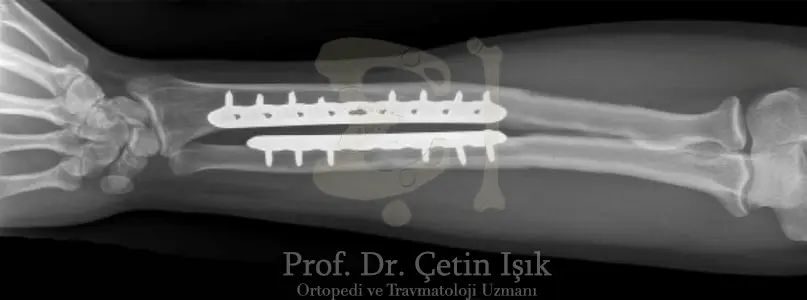
Internal fixation with an intramedullary rob
It is done by inserting a metal skewer into the center of the bone to fix it.
external fixation
The broken bone is treated by fixing the bone with nails and screws above and below the fracture (without going through the center of the fracture). This technique is used in cases where severe damage to the skin and muscles has occurred.
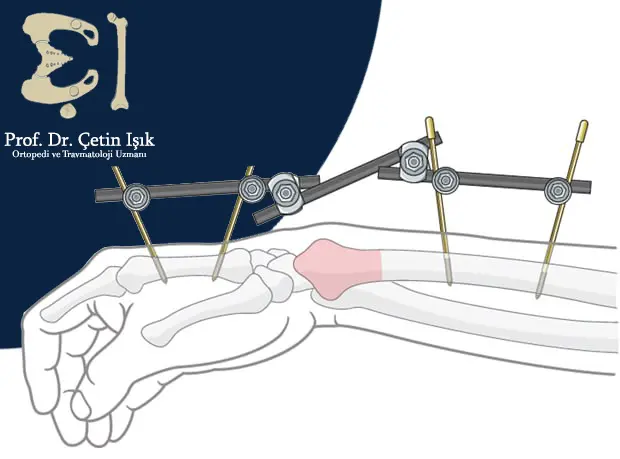
In conclusion, it can be said that forearm fractures are common, whether in one or both bones of the forearm, and the places that may be affected by the fracture vary. When they occur, you should go directly to the nearest hospital or health care center immediately. Don't panic; these fractures can heal with conservative treatment or surgery.
Sources:
Common questions
Severe pain and swelling with numbness and deformation of the bone are evidence of a fracture. You should go to the nearest hospital to receive the appropriate management.
As a result of receiving a solid blow to the right forearm, the patient may suffer an open fracture of the right forearm bone and dislocation, which is a severe condition.
Forearm surgery requires an average of 2 to 3 hours, which can be prolonged or shortened depending on the type of surgical treatment used.
Food containing calcium and vitamin D elements found in sardines, egg yolks, and milk help prevent osteoporosis, and antioxidants maintain cartilage health and protect our bones.




